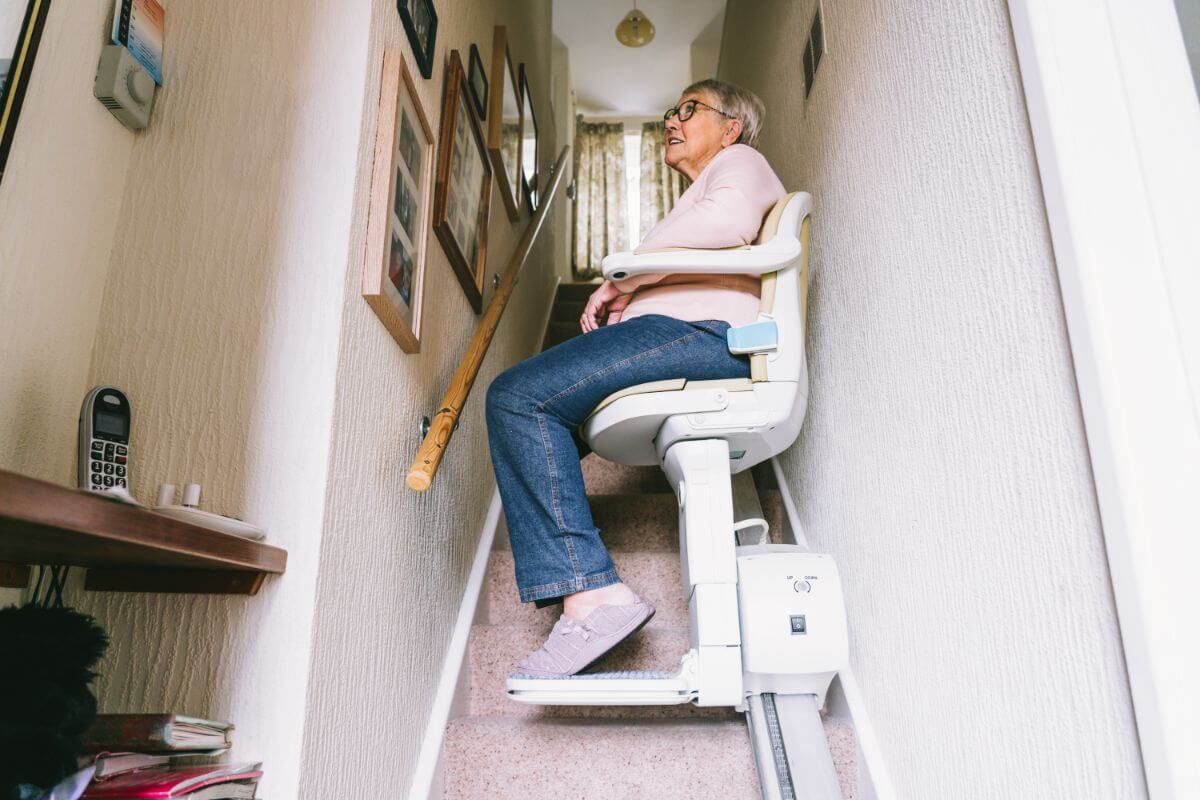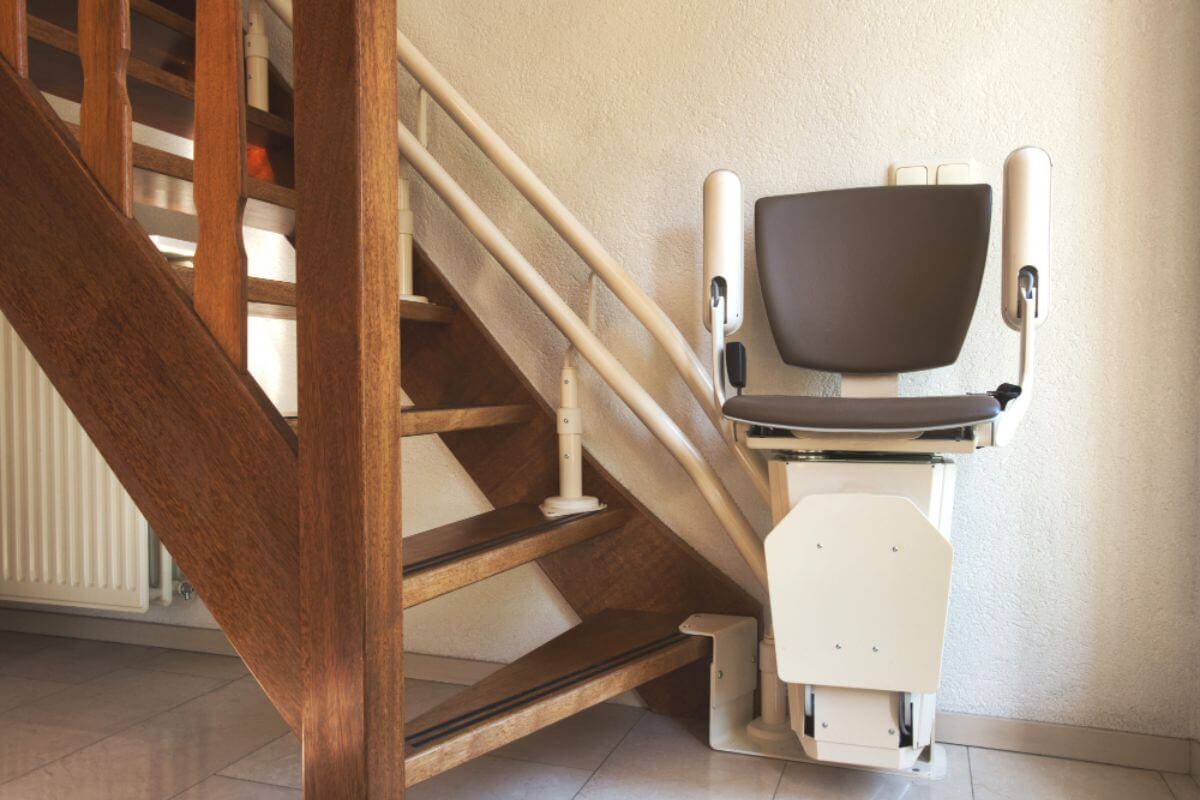16 Easy Activities Every Older Adult Can Do At Home

Staying active becomes less and less of a priority as you get older. But it’s just as important to stay active in your golden years as it is at any other time of your life.
Physical, mental, and social activities keep your mind sharp and improve your psychological well-being. It improves your overall health and enriches your everyday life.
The good news is- you don’t have to go out of your home to engage in various activities. There are so many easy and fun activities that you can do right from the comfort of your home:
Engage in active games and sports
Active games and sports are fun ways to get some exercise, enhance hand-eye coordination, and develop a sense of mastery over the physical environment. Achieving these benefits can be incredibly fulfilling, especially if you get to overcome challenges or engage in friendly competition with others.
Look for games and sports that are suitable to your physical capability and the available space in your home. Examples of active games and sports that are not physically demanding and do not require too much space are miniature golf, pool, shuffleboard, ball/frisbee tossing, badminton, and lawn/indoor bowling.
You can also invite family, friends, or neighbors to do these activities together to make them more fun, competitive, and engaging. You can even hold a mini tournament with your neighbors!
Try performance arts
Dancing can connect your body to stimulating and therapeutic rhythms. Bopping to your favorite beats indoors, in an online dance class, or outdoors with others- enhances strength, flexibility, and balance while protecting the heart and reducing the risk of falls. Additionally, dance can improve your mood, keep your mind bright, and help you socialize.
Belting out your favorite tunes helps improve mental alertness by delivering more oxygenated blood to the brain. Singing has also been found to help dementia sufferers focus and remember things better.
Additionally, performing in other capacities, such as taking part in a home skit, trying out a stand-up comedy routine in front of family and friends, or reading books aloud/storytelling to your grandchildren can serve as a reminder of how much fun it can be to tell stories in original or imaginative ways.

Organize social gatherings
Staying socially active not only staves off loneliness, but also enhances memory and cognitive function, boosts pleasure and well-being, and might even lengthen your life. The ideal way to interact is in person, although connecting through technology comes with the same benefits.
Simply engaging in a good conversation may do more to improve your outlook and disposition than anything else on this list, particularly if you keep it lighthearted.
Do you like organizing events? You don’t have to wait around for somebody else to hold a gathering- you can organize a few events yourself! Something as simple as inviting a couple of friends over for some chitchat over lunch or afternoon tea can do wonders for your mental health.
With the help of technology, you can organize a virtual get-together with family or friends who live far away to catch up with one another.
If you’re up for something grander, you can plan home parties with fun themes like Casino Night, Carnival, Secret Santa, and Ugly Sweater Contests, that everyone will surely enjoy.
Play traditional games and puzzles
Card games and board games are excellent ways to interact with others while enjoying the fun challenges of friendly competition. Solving puzzles can help you think more clearly and give you a sense of progress and accomplishment.
You can teach others how to play traditional games and puzzles, like Uno, Pictionary, Go Fish, Monopoly, crossword puzzles, word search puzzles, etc. This can be a great bonding opportunity for you and the younger generation.
Hit the books
You already know how beneficial reading is for stimulating the brain, triggering the imagination, and keeping you entertained for hours.
Additionally, it can enhance cognition, lessen stress, enhance sleep, and prevent cognitive deterioration.
Books come in all forms now- hard-copy/printed books, digital ebooks, and audiobooks (which are perfect, in case your eyesight is no longer as good as it was before).
If you happen to know fellow book lovers, you can start a book club so you can enjoy reading and socializing at the same time. How about a “Harry Potter Grandmothers Book Club”, or a poetry reading group?
Try your hand at writing
Maybe you’ve dreamed of being a writer before? It’s never too late to do some writing of your own. You can try your hand at short articles, family history, poetry, autobiography, fiction, how-to articles, blogs – the sky’s the limit!
Writing keeps your creative juices flowing and your mind sharp. It also gives you a deepened sense of passion and purpose.
Learn a new skill
Learning can open up a whole new world of possibilities for you, regardless of your age.
Explore your interests and curiosities: What are the skills you always wanted to learn but never had time to do so when you were younger? Whether it’s playing a musical instrument, learning a foreign language, improving your computer skills, or taking fantastic pictures- now is the perfect time to do so! You can also try things that are totally new to you, such as graphic design, video creation, editing, digital arts, etc.
These days, you can learn anything by watching YouTube videos, taking online courses, and joining Facebook groups.

Engage in a new hobby
Hobbies are also fantastic ways for using your time at home productively- they provide you the freedom to try something new with little pressure and allow you to take pleasure in the process of learning new things. They keep your brain sharp and alert, improving cognitive health, and also keep your mind occupied, benefiting mental health.
There are many hobbies that you can conveniently do at home: cooking, baking, birdwatching, knitting, crocheting, indoor or container gardening, board games, video games, painting, etc.
Exercise regularly
Remember that even a little exercise is better than none at all. The more physical exercise you engage in, the more benefits there will be for your health.
Many age-related health issues can be avoided or delayed with regular exercise. Additionally, it supports muscular growth so that you can continue carrying out daily tasks independently.
The Center for Disease Control and Prevention (CDC) recommends the following physical activity guidelines for adults aged 65 and older:
- Moderate intensity activity (such as brisk walking) for at least 150 minutes a week (for example, 30 minutes a day, 5 days a week). Or you can do 75 minutes a week of vigorous-intensity activity such as hiking, jogging, or running.
- Muscle-strengthening exercises for at least 2 days a week.
- Activities to improve balance (such as standing on one foot) about 3 days a week.
If chronic conditions prevent you from following these guidelines, be as physically active as your abilities and conditions permit. There are seated exercises or chair yoga practices that you can do. There are also exercise routines that are designed to be done using a walker, or routines that are especially focused on the feet and ankles to help reduce swelling.
You can do a variety of simple exercises that help improve strength and balance. Examples of such exercises are:
- Single limb stance
- Walking heel to toe
- Rock the boat
- Back leg raises
- Wall push-ups
You can perform this strength training exercise for seniors anywhere that has a wall.
Place yourself at arm’s length in front of a blank wall (no artwork, ornaments, windows, or doors). Lean slightly forward and place your palms flat on the wall at shoulder height and width. As you carefully move your body toward the wall, maintain your footing. Pull back gently until your arms are straight. Do 20 of these.
Hold on to the back of a stable, sturdy chair (one without wheels). Balance on your left foot while raising your right foot. Maintain that posture for as long as you can, then switch feet.
The objective is to maintain the one-footed position for up to a minute without hanging on the chair.
This exercise will make your legs stronger, minimizing the risk of falls while walking.
Place your right foot in front of your left foot so that your right foot’s heel contacts the top of your left foot’s toes. Put your weight on your left heel and place your left foot in front of your right. Put your weight on your toes next. Repeat this process with your left foot. Do this exercise 20 times.
Stand with feet hip-width apart. Make sure that both feet are firmly planted. Straighten your body and keep your head level. After that, shift your weight to your right foot and raise your left leg slowly off the floor. Keep your body in that position as long as you can (but no more than 30 seconds).
Return your left foot to the ground slowly before shifting your weight to that foot. Lift your right leg gradually. Start off by performing this balance exercise five times on each side, then increase the number of repetitions.
This exercise strengthens your lower back and your bottom.
Holding onto a sturdy chair, slowly raise your right leg straight back. Do not point your toes or bend your knees as you raise your leg. Hold that posture for one second before slowly lowering your leg. Repeat this ten to fifteen times per leg.
Remember to always exercise with caution and to consult your physician first before embarking on a new fitness regime. As an added safety measure, aside from using a sturdy chair as your support, it is best to have other forms of dependable support to hold on to around your exercise area, such as a grab bar, SuperPole, handrail, or the advantage rail.
Explore your creative side
Unleash your inner Picasso!
Sculpting, painting, coloring, and drawing are all fantastic ways of bringing out your creativity. You can also do projects that can make use of your artistic talent, such as constructing family recipe books, organizing photo albums, or making scrapbooks.
Creativity is good for your health. People with chronic illnesses who engage in creative activities experience fewer negative emotions, such as stress and worry, improving their overall health.
The act of doing arts and crafts involves mostly using your hands, which naturally increases blood flow. It is a great way to increase the dexterity of your hands, fingers, and arms.
Be one with nature
Going outside to spend some time in nature is calming and a terrific way to improve your mood.
Make it a regular habit to sit on your porch or beside a large window to get some fresh air or take in the scenery. Classic early research shows that viewing nature through windows or even in pictures can positively affect stress recovery, lower blood pressure, and regulate heart rate.
Doing activities that allow you to engage with and touch nature, such as gardening, promotes emotion regulation and stress alleviation, thus improving your psychological well-being.
Go for good old-fashioned entertainment
Watching TV or listening to music are two classic but enjoyable past-times that can help you unwind, especially at the end of a long day.
The benefits of music include decreased stress, anxiety, and pain, improved memory, enhanced immunity, and better sleep.
Want to make your TV time more productive? Watch educational shows such as those that teach you a new skill (for example, food shows on the Food Network; travel and nature programs, if you are interested in nature), documentaries that help you understand your subject of interest better, and so on.
But remember- don’t be a couch potato who spends the whole day just watching TV. Get up, stretch, socialize and get out to smell the flowers.
Get involved with charity
You can still contribute to society even if you stay home, such as contributing to charity.
Get in touch with the neighborhood hospitals, charities, or religious groups to find out whether there are any initiatives that you could help with. This could entail making knitted or crocheted blankets or hats, assisting to put together care packages, doing donation drives for worthwhile causes, or donating old clothes, canned goods, or money to your local charity or church.
Contributing to causes that you believe in is a fantastic way to stay engaged and have a sense of purpose and accomplishment.
Have fun with culinary creations
Cooking and baking offer great benefits to one’s overall wellness but these activities are commonly neglected in this era of convenience (food delivery apps, 24/7 food delivery services, instant food), especially as we become older.
But the art of cooking offers many perks that go beyond what you see on your plate.
Research shows that culinary activities, in addition to improving your cooking abilities, can enhance your health, improve your appetite, and regulate weight. Furthermore, homecooked food is healthier than fast food, especially for individuals with type 2 diabetes, cardiovascular disease, and possibly, cancer.
Cooking a meal arouses your sense of sight, hearing, smell, taste, and touch. The tactical nature of cooking calls for good hand-eye coordination. It can help you stay focused and possibly improve your mood, and your overall mental health, if you do it frequently.
Familiar tastes and smells can evoke strong memories from your youth (have you seen the movie Ratatouille?). If you feel that your memory and focus are not as sharp as they used to be, cooking can serve as a therapeutic reminder of the comforting tastes and aroma from your past.

Become a fur-parent
Just like us humans, animals also desire and need to have fun- and having a pet can be beneficial to both parties.
Pets offer warm companionship, serve as wonderful icebreakers and help you connect with others. You may discover new hobbies and pursuits, such as initiatives and causes focused on animal welfare, and you may also join organizations for pet owners.
Your furry friends also keep you active- Having a dog is a terrific incentive to incorporate daily walks into your routine. Playing with your pets, feeding, and grooming them also involve some level of physical activity.
If having a high-maintenance pet is out of the question, there is a variety of low-maintenance pets that you can choose from, such as a fish, bird, or rabbit.
Additionally, even if you can’t have any pets at all, it is relatively easy to find animals to engage with. Several organizations offer services to older adults who want to spend quality time with dogs, cats, or other animals, examples are the Therapeutic Paws of Canada, The St. John Ambulance Therapy Dog Program, and Companion Paws Canada.
Make time for self-pampering
Giving your body special treatment is a healthy technique to revitalize your whole being.
In addition to keeping your skin supple and your body in good condition, spa-related activities like massages and warm baths have been found to calm even small colicky babies. As we age, we tend to forget to take the time and effort to indulge ourselves.
Other forms of self-pampering activities that you can do are deep conditioning your hair once a week, giving yourself a facial, or getting a mani-pedi.
While self-pampering may not have the same health effect as exercise or diet does on our body, taking time to pamper yourself makes you feel good about yourself and your life.
Conclusion
Make your senior years more joy-filled and enjoyable by staying active and engaging in meaningful activities and hobbies. We have provided you with a list of some of the most popular ones you can do at home- are there more that you can add? Feel free to explore your inner self to discover other activities that will bring excitement and purpose into your golden years.
With the right home safety modifications and upgrades, you can age in the home you love. Our team in Home2stay has helped numerous older adults live with independence and dignity in their own homes. Book an in-home assessment today- it’s FREE!





Leave a Comment
We'd Love to Hear Your Thoughts Got something to say? We're all ears! Leave your comments below and let us know what you think. Your feedback helps us improve and serve you better. Can't wait to hear from you!